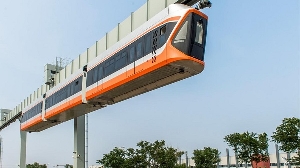That Ghana has been undergoing power rationing in recent times is not for want of generation capacity; the lack of stable power supply in the country is, in the main, a fuel supply issue.
And while President Mahama’s goal of achieving 5000megawatts of installed capacity by 2016 appears achievable, certainly not by the 2016 target though, the lack of adequate supply of fuel could render the many thermal power projects the nation is embarking on white elephants.
If government does not pay equal or a more serious attention to the fuel supply side of the electricity value chain, the country could have so much installed capacity and still grapple with stable power supply.
That is already the situation the country finds itself in and it could get worse as thermal generation, which relies on light crude oil or gas, takes centre stage in power generation.
Fact is, there is enough install capacity to ensure uninterrupted power supply, but for want of affordable fuel power has to be rationed every now and then across the country.
Sector managers say that the country has 2845megawatts of generation capacity while peak demand is around 2000megawatts. Ideally, therefore, Ghana should not be in a power crisis.
Out of the close to 3000megawatts, however, only about 1600megawatts is available due, principally, to the fuel supply challenge, minimally to maintenance and expansion issues.
As the Millennium Challenge Corporation readies its power sector support package, and as the International Finance Corporation (IFC) of the World Bank group agrees to support power generation, the African Centre for Energy Policy (ACEP) argues that the idle installed capacity needs to be interrogated.
“This is because if we do not take into consideration how to make all the over 2840megawatts available how do we talk about bringing in new generation capacity?” asked Dr. Mohammed Amin Adam, ACEP’s Executive Director.
Gas supply from Nigeria has particularly let the country down, and the West Africa Gas Pipeline has so far, fallen far short of what ECOWAS expected of it when it conceived the idea in 1982 – a key propeller of sub-regional integration.
At the best of times, even before the breakdown of the pipeline, WAPCO has provided only about 40% to 60% of the contractual volumes of over 120million standard cubic feet per day of gas.
For a whole year, from August 2012 to August 2013, the three countries –Ghana, Togo, and Benin – received no gas from the pipeline because it was damaged by a vessel in Togolese waters.
Supply resumed when the pipeline was fixed, but the quantity never went close to the 120million cubic feet per day contractual volume.
“Nigeria's commitment to the project is only to project influence,” Dr Kwabena Donkor, Chairman of the Parliamentary Select Committee on Mines and Energy, argues.
The electric power situation, he says, is a national security one and that Ghana should not continue to tie her national security to the availability of gas from Nigeria, a country grappling with an even worse power situation. Today, volumes supplied to Ghana have dropped to an all- time low, making it difficult for the solely gas-reliant Sunon Asogli power plant (200 megawatts) to stay on.
Indeed, the Shenzhen Energy Group, mother-company of Sunon Asogli, told the Energy Minister Emmanuel Armah Kofi Buah upon his visit to China earlier in the year that but for the challenges with gas supply, they would have started the second phase of the project involving some 360 megawatts of power.
As the hydropower potential of the country is said to have effectively run out, there is an increasing emphasis on gas for power generation. According to the VRA, the country currently demands some 300 million cubic feet of gas per day.
The construction of infrastructure for gas from the country's own Jubilee oilfield, a maximum of 120 million standard cubic feet per day, has run far beyond its initial completion period and is not expected until the end of the year.
President Mahama believes though that Ghana Gas will be a significant source of fuel for the power sector. He called it a “game changer” upon a recent visit to the project site at Atuabo in the Western Region.
“It will save us almost half a billion dollars a year in light crude purchases, and another billion dollars in foreign exchange savings for the purchase of light crude oil; and that is because the VRA will be able to purchase the gas in cedis,” the President said.
According to power sector managers, however, significant as the Atuabo gas is, the 107 million standard cubic feet of gas per day expected from the project will not suffice for the increasing gas demand.
The managers are therefore agreed that other sources of gas have to be explored if the country is to have enough sufficient cheap fuel to ensure uninterrupted power supply.
The country has to decide now, according to Dr Kwabena Donkor, to get a regasification facility and import Liquefied Natural Gas (LNG) to complement its expanding energy demand and treat gas from Nigeria only as a “bonus.”
“We must be thinking about our national security,” he said.
Projections by the VRA indicate that the country will require over 1000 standard cubic feet of gas per day by 2020, a strenuous efforts must be made to secure varied sources of the commodity.
Business News of Tuesday, 9 September 2014
Source: BFT













